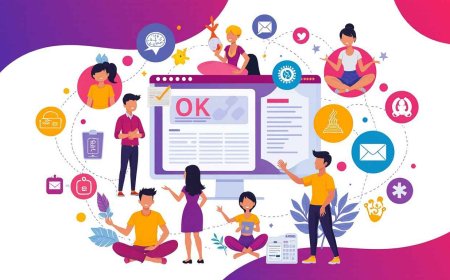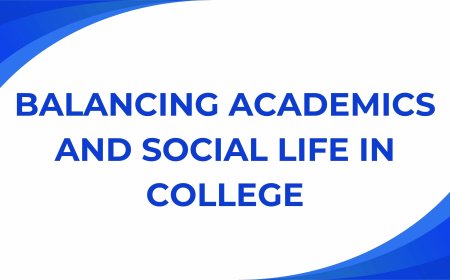Unsent Love Letters Journal A Surprising Tool for Increasing Student Goal-Orientedness
Discover how an Unsent Love Letters Journal can surprisingly boost student motivation, focus, and goal-orientedness through emotional self-reflection.

In a world of deadlines, distractions, and digital overload, educators and psychologists are increasingly searching for innovative methods to cultivate motivation, emotional awareness, and resilience in students. One surprising yet powerful tool emerging in this field is theUnsent Love Letters Journal. At first glance, it may appear unconventionaleven whimsicalbut its impact on self-awareness, clarity, and personal growth is quietly revolutionary. More importantly, it holds significant potential for academic and personal contexts.
Concept of the Unsent Love Letters Journal
An Unsent Love Letters Journal is exactly what it sounds like: a personal journal where individuals write letters to peoplepast, present, or even imaginarythat they never intend to send. These letters may be filled with affection, regret, anger, gratitude, or unspoken truths. The core idea is to articulate thoughts and emotions that might otherwise remain repressed or unclear.
This exercise isnt about the recipient; it's about the writer. In academic settings, this approach is being adapted not just for emotional catharsis but also as a reflective tool that fosters metacognition, focus, and clarityqualities directly tied to goal-directed behavior.
Emotional Literacy and Academic Success
Emotional intelligence plays a critical role in shaping a students ability to plan, prioritize, and persist. When students are unaware of their emotional states or unable to express them, they often struggle with focus, motivation, and decision-making.
By writing unsent letters, students engage deeply with their internal narratives. Whether it's a letter to a parent, a former friend, a future self, or even a fictional muse, the process gives them an outlet to untangle emotional knots that may be hindering their academic progress.
For example, a student grappling with the pressure of expectations may write a letter to a demanding parentnot to accuse or confront, but to voice unspoken truths. The act of writing becomes a mirror, helping the student recognize how external pressures shape their internal dialogue and influence their academic performance. This heightened self-awareness paves the way for more intentional goal-setting and greater control over personal outcomes.
Creating Clarity Through Expression
Students often feel overwhelmed not by the volume of their responsibilities, but by a lack of clarity in how to approach them. Clarity, like motivation, is not simply foundit is created. The Unsent Love Letters Journal offers a space where students can privately explore their doubts, desires, and dreams.
A letter to a future self, for instance, can become a powerful roadmap. By imagining where they want to be in five or ten years, students start to articulate their long-term goals and what they must do in the present to reach them. This backward mappingstarting with the end in mind and working in reverseis a cornerstone of effective goal-setting.
Moreover, because the letters are unsent and entirely private, students feel safe expressing vulnerability. Theyre not performing for a grade or an audience. This freedom reduces the cognitive load of self-censorship, allowing for genuine introspection and strategic thinking.
Transforming Internal Dialogue
Much of what influences a student's behavior is invisible: their inner dialogue. These internal narratives, sometimes empowering, self-sabotaging, can dictate how students respond to failure, handle pressure, and pursue goals.
The Unsent Love Letters Journal provides a structure for re-authoring these internal scripts. A student may write to a younger version of themselves, offering encouragement and compassion. In doing so, they recognize how far theyve come and internalize the resilience they might have overlooked. Another may write to a teacher who underestimated them, channeling that memory into fuel for achievement.
Each entry serves as a narrative anchor, grounding the student in their personal story while helping them rewrite it in a more empowering and goal-oriented direction.
Building Habits of Reflection and Focus
Goal-setting is not a one-time event; its a habit. Just as athletes review performance tapes and adjust their training plans, students need tools for regular reflection and recalibration. The journal becomes a space for this ongoing process.
Many educators are now incorporating weekly or monthly journal prompts that align with academic cycles. For instance, at the start of a semester, students might write an unsent letter to a mentor outlining their hopes and fears. Midway through, they might reflect on a recent challenge and write to someone who helped them through it. These rituals build a habit of self-reflection and personal tracking, which naturally contributes to increasing student goal-orientedness in a sustainable, student-driven way.
Mental Health and Motivation A Crucial Link
Mental health challenges like anxiety and depression are on the rise in academic settings, and these emotional burdens often manifest as decreased motivation or disengagement from academic goals. By offering a non-judgmental, private outlet, the Unsent Love Letters Journal helps students process complex emotions, reducing the emotional clutter that impedes motivation.
Writing a letter to a lost loved one or to someone who caused pain may seem tangential to academic success, but the emotional release it offers can clear the way for renewed focus and energy. When students feel emotionally lighter, they have more cognitive bandwidth to invest in planning, execution, and achievement.
Science of Writing and Goal Activation
Neuroscience supports the idea that expressive writing activates the brain's goal-setting mechanisms. Studies show that writing about ones aspirations and internal conflicts stimulates the medial prefrontal cortexan area associated with self-reflection and value-based decision-making.
The unsent letter format intensifies this effect by combining the emotional depth of storytelling with the cognitive clarity of intentional writing. As students process complex feelings, they begin to see patterns, formulate insights, and identify actionable stepsall of which are key components in goal activation and follow-through.
Practical Implementation in Classrooms
Teachers looking to implement the Unsent Love Letters Journal can start small. Here are a few ideas:
-
Prompt starters: Write a letter to your future self explaining what you hope to learn this semester, or Write a letter to fearwhat would you say if fear couldnt talk back?
-
Regular journaling blocks: Ten minutes at the beginning or end of class to build consistency.
-
Optional sharing: Encourage voluntary sharing for those who find strength in community, but maintain the privacy of the exercise as its core.
By integrating this tool within existing curriculum or advisory periods, educators create an environment where emotional intelligence, reflective thinking, and goal-directed behavior are nurtured side by side.
Simple Tool, A Deep Impact
The Unsent Love Letters Journal is more than a writing exerciseits a quiet revolution in how we approach student development. In a time when students are often encouraged to grind without pause or reflection, this tool offers an alternative path: one rooted in emotional honesty, introspection, and personal narrative.
By helping students clarify their values, express hidden truths, and reframe their internal narratives, this practice opens the door to more intentional and resilient goal pursuit. And in doing so, it plays a powerful role in orientation, not by external force, but by awakening intrinsic motivation and self-awareness.


































